All About Bird Songs: Nature’s Symphony
Updated: Feb. 08, 2024
Learn the difference between bird songs and calls, and find out how birds learn to sing their distinctive, notable sounds.
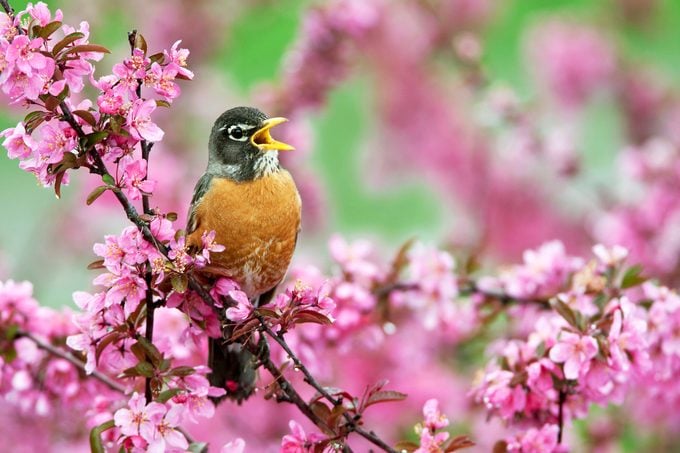
One of the joys of spring and early summer is the sheer abundance of bird songs filling the outdoors. Every kind of bird adds to the chorus with its own particular sounds—often beautiful, sometimes harsh, but always interesting. It’s possible to enjoy this free concert for its musical quality, but it becomes even more fascinating when we know why the birds make these sounds.
On This Page
Bird Songs or Calls: What’s the Difference?
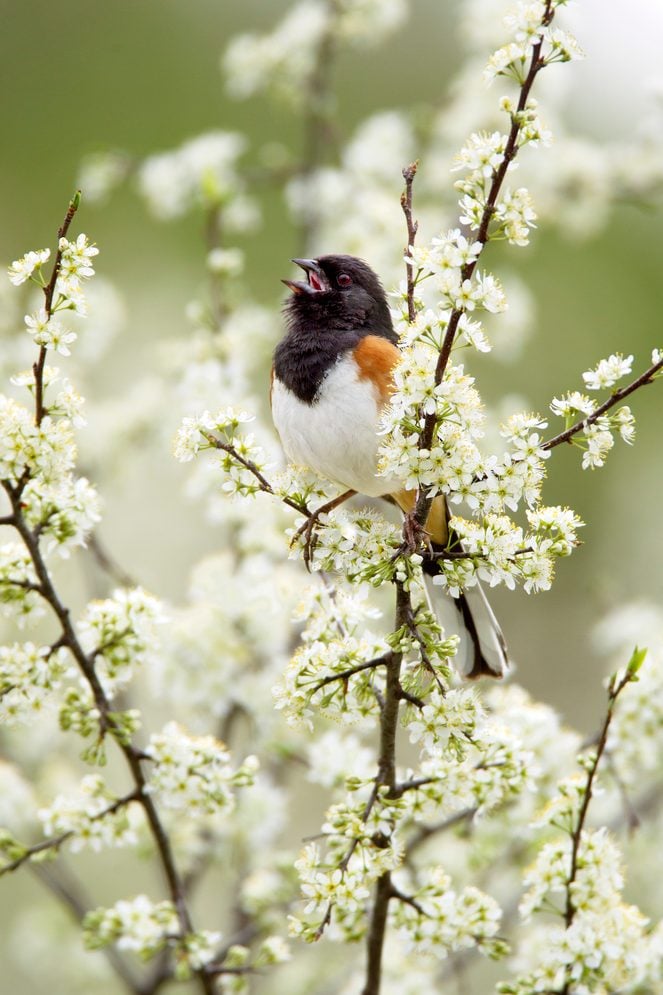
Most common backyard birds make a variety of sounds, including songs and calls. For example, the American robin song is a rich, whistled caroling—chirrup, cheerio, cheerup, cheerily—often beginning at dawn or even earlier. Robins also make many different calls, including low clucks and chuckles, sharp cries and thin lisping notes.
Songs are typically longer and more complicated than calls, and may be more musical. But the main difference is in their purpose.
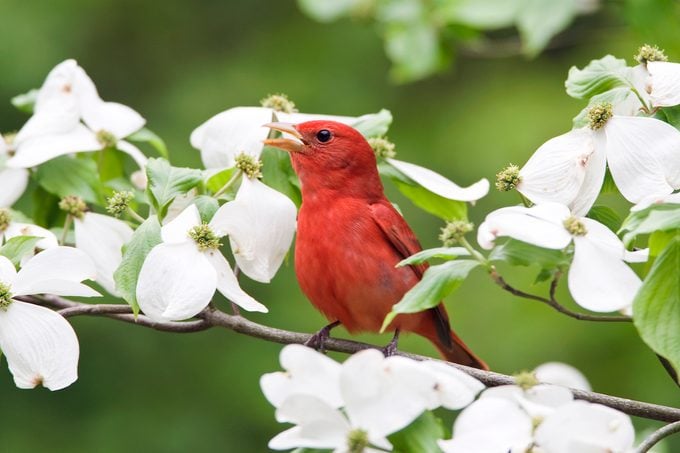
You can hear calls at any time of year, and they have a variety of functions. Harsh notes may serve as alarm calls, and the birds may have different alarm notes for various threats. Sometimes short, simple calls help members of a flock stay in contact with each other. Young birds often have food-begging calls, different from any sound made by the adults, to let their parents know when they are hungry.
Songs, on the other hand, are performed mostly by adult males, and they use them to lay claim to a nesting territory and to attract a mate—or to communicate with their mate after they have paired up. So almost all the singing is during the breeding season, and the symphony ends around the time the last brood of fledglings is ready to leave the nest. When the birds sing at other times of year, they may simply be practicing.
Learn how to identify birds by their song.
How Do Birds Learn to Sing?
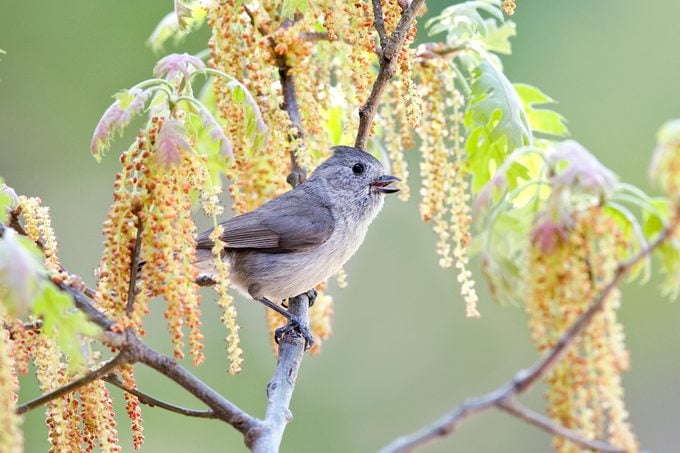
Songbirds perform so naturally that we might imagine they were born knowing their tunes, but most birds actually have to learn them. If they don’t hear their own species’ song while they are young, they will never learn to sing it properly. And because they learn to imitate the songs they hear in their home area, some species develop regional song dialects, like how humans from different places speak with varying accents.
Bird mimics and mimicry: here’s what you need to know.
White-crowned sparrows and mourning warblers are examples of birds with distinctive local dialects. But calls, unlike songs, seem to be instinctive, and birds develop the typical calls of their own species without having to hear them first.
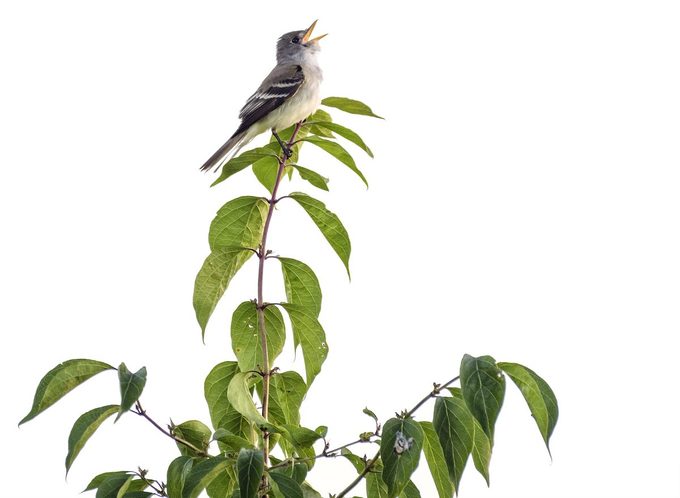
Members of the flycatcher family, such as the eastern phoebe and great crested flycatcher, differ from other songbirds because they develop their songs through instinct, not learning. And because many species of flycatchers look very similar to each other, it’s imperative for them to be able to recognize their own kind by voice.
For groups such as hawks, geese and ducks, all vocalizations are calls, not songs. And some other bird groups don’t fit in the songbird category but still make sounds that function as songs, including some hummingbirds and many nocturnal birds such as owls and whip-poor-wills, singing in the dark to defend their nesting territories. These birds are all thought to develop their sounds through instinct, not learning.
Music in motion: meet the birds that sing while flying.
Do Female Birds Sing?
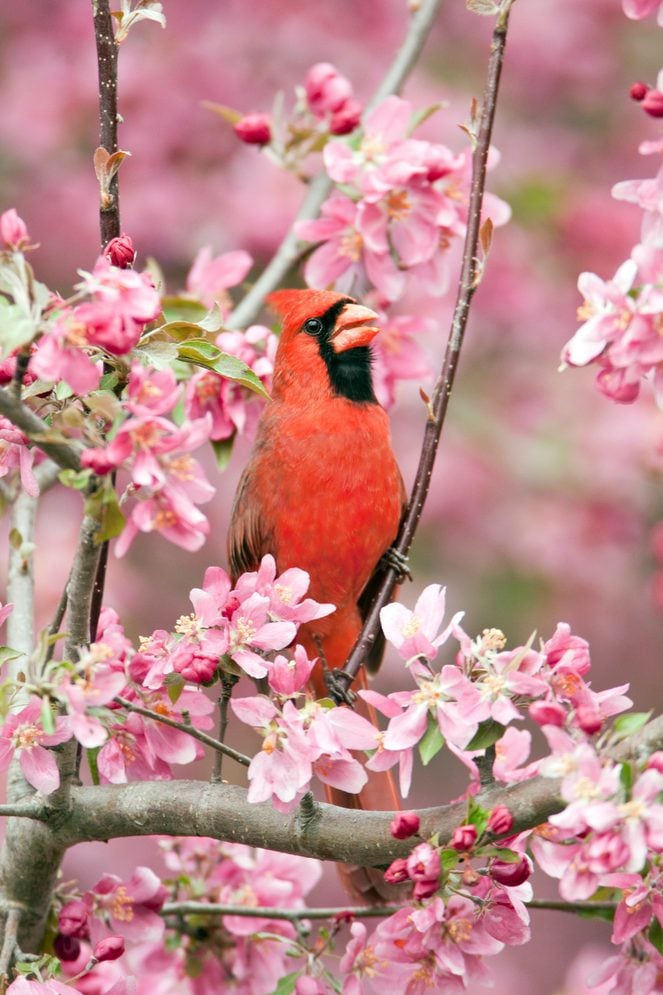
For many years, scientists assumed that males were the only important singers among birds. But recent studies have changed that view. Singing by female birds has been documented in hundreds of species now, with new examples being discovered all the time.
Female northern cardinals sing musical, whistled songs like those of the males, although not as often. In tropical forests, many female birds sing regularly, and the male and female of a pair may sing duets back and forth. Wherever you are, some birds are likely to be performing free open-air concerts nearby. Take the time to listen, and you’ll be treated to some of the most fascinating sounds in nature.
Hear the soothing sounds of a mourning dove call.
Why Do Birds Sing at Dawn?
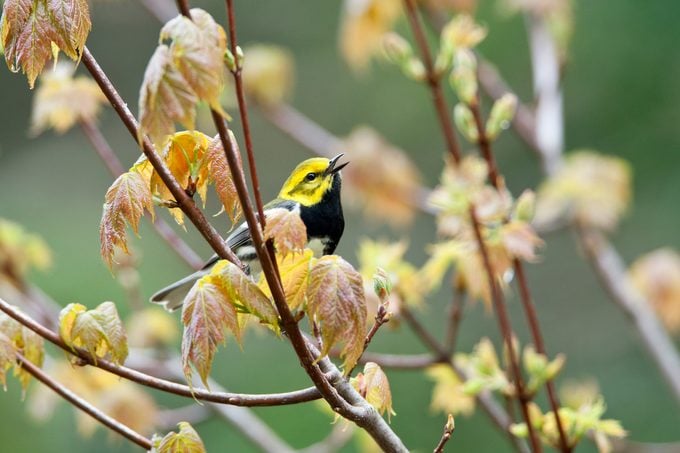
During late spring and early summer, an incentive for waking up early is the chance to hear the dawn chorus of bird songs. Some birds, such as robins and cardinals, may start singing when there is just a hint of light on the eastern horizon. More birds join in as dawn approaches, with a peak of song right around sunrise.
Why do they start so early? Birds may need to assert their claims to their nesting territory first thing in the morning, just in case any migrants have arrived during the night. And singing may be the best use of their time when it isn’t light enough yet to search for food.
Next, learn what a Baltimore oriole song sounds like.
About the Experts
Kenn and Kimberly Kaufman, authors of the Kaufman Field Guide Series, are the official birding experts for Birds & Blooms.
Why Trust Us
For nearly 30 years, Birds & Blooms, a Trusted Media Brand, has been inspiring readers to have a lifelong love of birding, gardening and nature. We are the #1 bird and garden magazine in North America and a trusted online resource for over 15 million outdoor enthusiasts annually. Our library of thousands of informative articles and how-tos has been written by trusted journalists and fact-checked by bird and garden experts for accuracy. In addition to our staff of experienced gardeners and bird-watchers, we hire individuals who have years of education and hands-on experience with birding, bird feeding, gardening, butterflies, bugs and more. Learn more about Birds & Blooms, our field editor program, and our submission guidelines.

